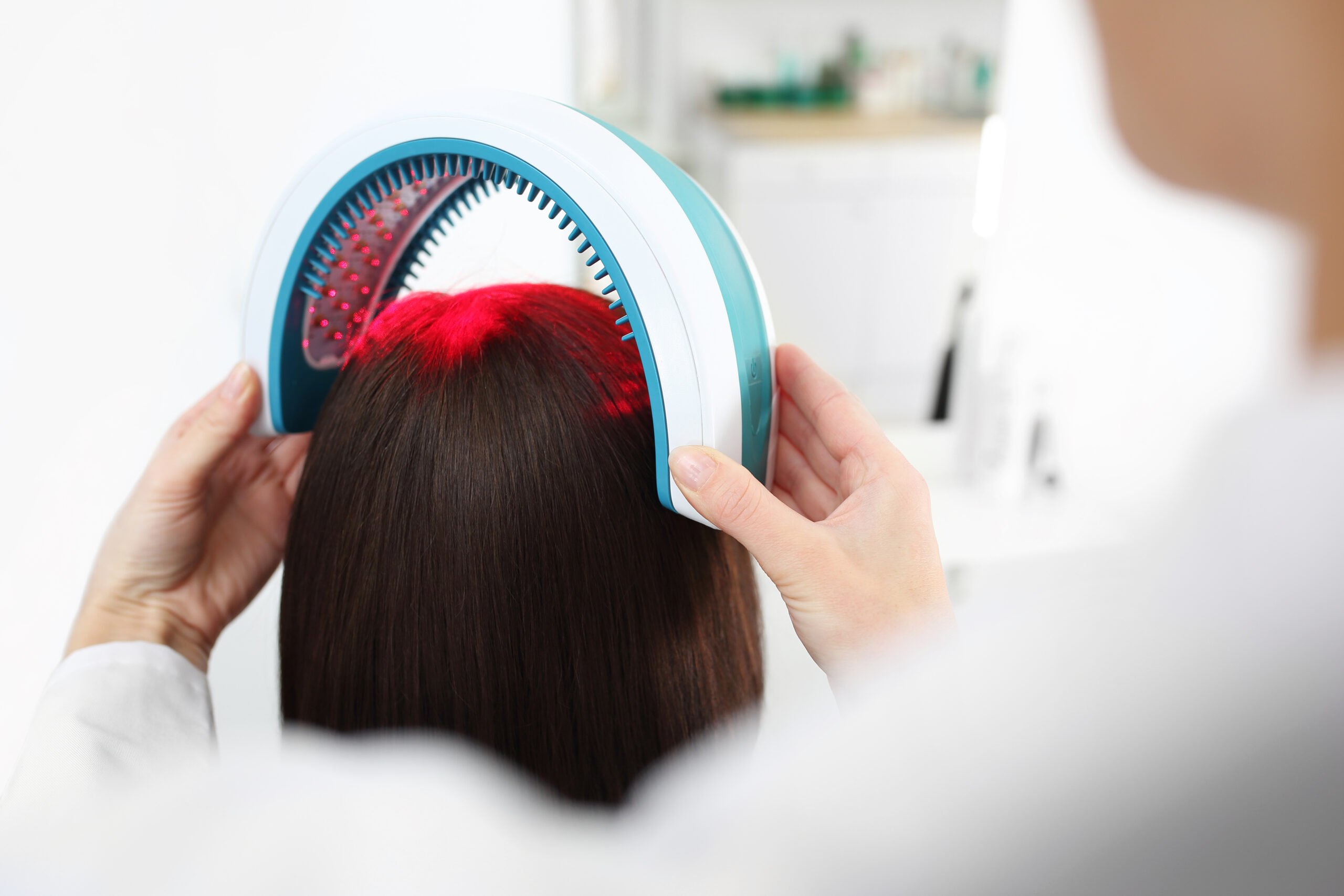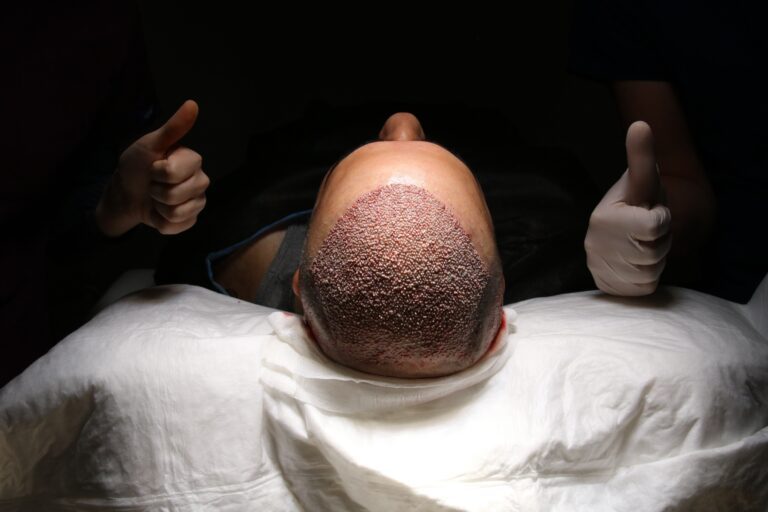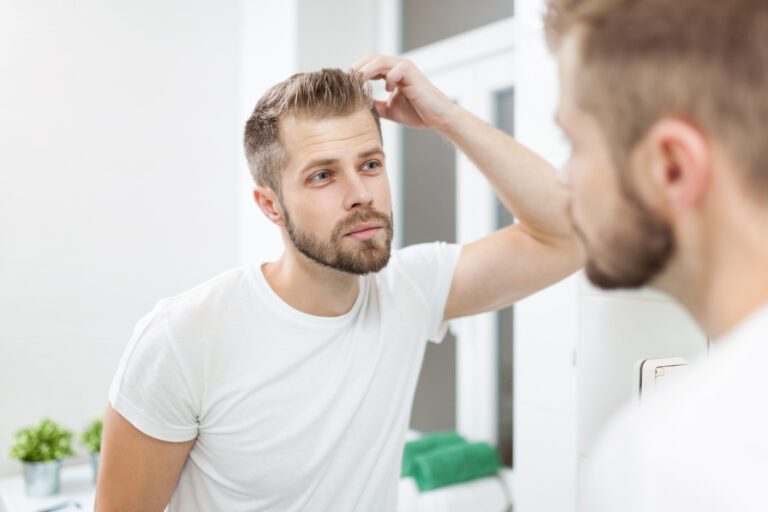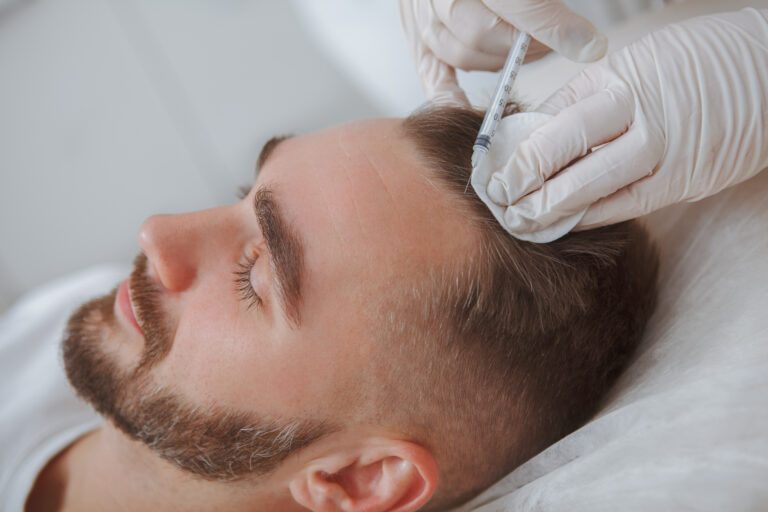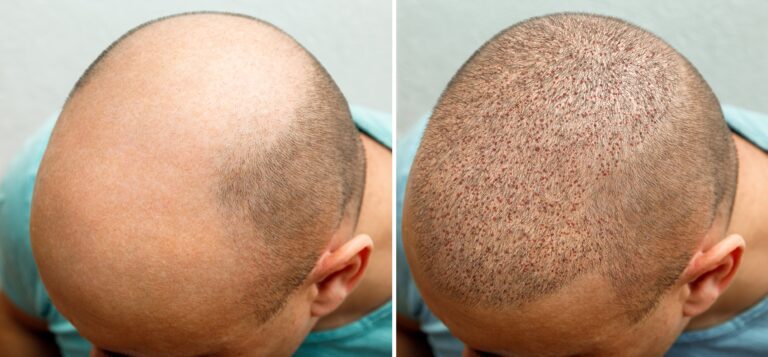Can Low-Level Laser Therapy (LLLT) Treat Hair Loss?
Low-level laser therapy (LLLT) uses low-intensity lasers aimed at affected hair loss areas. Research shows that these lasers, aside from helping with muscle inflammation and pain, stimulate growth in hair follicles, too.
Can low-level laser hair therapy treat hair loss? The short answer is yes, it can, but there are still a lot of gaps in its research. It works for some, but it doesn’t for others.
Below is everything you need to know about LLLT and its possible effects on hair loss.
What Is LLLT?
Low-level laser therapy goes by several names, including photobiomodulation, red light therapy, biostimulation, or cold/soft laser.
LLLT is one of three possible treatment options for hair loss. The other two include medications, specifically finasteride and minoxidil, and hair transplant surgery.
The medications prescribed also have effects on something else—finasteride for enlarged prostates, for example. Hair transplants, on the other hand, involve surgically placing grafts into your scalp.
Among the three treatment options, LLLT is considered safer and more tolerable.
How Does LLLT Work for Hair Loss?
The emerging technology of laser treatment for hair loss utilizes photons from low-intensity lasers. The irradiated photons from laser diodes are directed to the scalp and hair follicles.
These photons promote growth by stimulating cells in the hair follicle. When stimulated, the hair follicle then goes into its anagen phase or growth phase.
During this phase, cells divide rapidly, forming new hair. This new hair then pushes club hair—hair that’s in the catagen phase—out of the hair follicle.
Clubbed hairs, also known as telogen hair, are those that have stopped growing. They remain rooted at the hair follicle until displaced.
One thing to note is that there’s still a lot of research going on with LLLT. There are several theories, but the exact mechanism of red light therapy for hair loss and its specific effect on the tissue cells are yet to be determined.
Does Laser Hair Regrowth Work?
The 100% honest answer is that it works, but not for everybody. The reasons for this are still unknown. Since LLLT is relatively new, there’s still a lot of work to be done when it comes to scientifically backing all its claims.
However, there are existing studies that support its success in both animal and clinical trials. This is why it’s still a popular treatment choice.
There are studies that say that LLLT is generally safe for men and women experiencing hair loss. However, it’s not a be-all, end-all solution because it doesn’t work in every single instance.
Most of the time, trained professionals or a physician will handle the procedure, but there are treatments that allow you to do it at home yourself. One thing you have to note is to follow the durations and frequencies prescribed to you to see the desired effects.
Lastly, you also have to realize that no therapy will completely and irrevocably stop hair loss. Most treatments only work in slowing down the process and not completely eliminating it.
This is especially true for hair loss cases that involve a lot of genetic factors. As for scalp areas where there are no more hair follicles, laser hair regrowth might not be effective at all.
Low-level laser hair therapy works by stimulating the hair follicles, so the absence of hair follicles won’t induce regrowth at all.
Types of LLLT Devices and Treatments
What are the different types of LLLT devices and treatments you can choose from?
Laser Combs
Laser combs have bristles with built-in laser diodes. The principle is that all you have to do is brush through your hair like normal while the laser diodes do their job.
Some laser combs also come with other features, such as sonic vibrations to massage the scalp while you’re brushing. Their major selling point is that you can use them anywhere, anytime.
They’re also a lot less expensive than their helmet counterparts.
There are studies that show the effectiveness of laser combs in increasing the terminal hair density of people with pattern hair loss.
The drawback, however, is that it can be difficult to track which part of your scalp has had enough laser exposure. Since you’re constantly moving the comb, it’s hard to tell if you’ve covered all the scalp areas enough.
Below is a list of the three best laser combs on the market:
- HairClub’s Ultima 9 Classic Laser Comb
- Belgravia Centre’s HairMax LaserComb
- Xiaomi’s Cellight® Low-Level Laser Anti Hair Loss Comb
Laser Helmets
The alternative to laser combs is wearable helmet-like devices. You place these lightweight helmets over your head to expose your scalp to the low-level laser.
There are several manufacturers and models for these helmets, and the length of time you leave the helmets on mostly varies from one product to another.
For example, the LESCOLTON Hair Growth System automatically shuts down after 25 minutes of exposure.
Similar to the laser combs, there are studies that support the hair density and hair thickness effects of these helmet devices, too.
Here are a few of the best laser helmets currently available on the market:
- iRestore Professional Laser Hair Growth System
- LESCOLTON Hair Growth System
- Redenhair Hair Regenerating Helmet
Wearable Devices
Wearable devices such as those in the form of bonnets, caps, headbands, and hats are also available. The idea behind these devices is that they won’t interrupt your day-to-day activities. You can simply wear them while doing other things.
However, you have to be cautious when choosing one of these wearable devices because not all of them have been cleared by the FDA. Plus, many of them don’t have the correct certifications for electrical safety.
Ultimately, the choice of which device to use is up to you. You can check out personal reviews for each device and also read about the different models available to help in your decision.
Below are some of the FDA-approved wearable devices currently in the market:
- Hairmax Laser Hair Growth Cap
- COSBEAUTY Professional Hair Growth Laser Cap
- Aphrona® Advanced Hair Regrowth System
Are There Any Side Effects to LLLT?
You must be thinking: what about hair loss laser treatment side effects? Unlike its drug counterparts like finasteride, LLLT doesn’t have that long of a side effects list.
Hypertrichosis—or excessive hair growth—is a possible side effect but is mostly observed in laser hair removal therapy.
You can limit this side effect in low-level laser hair therapy by following the correct indicated fluences based on your device’s model and manufacturer.
In addition, a study examining the safety and efficacy of low-level laser hair therapy for pattern hair loss of males and females listed the following side effects seen in the participants:
- Dry skin
- Pruritus
- Scalp tenderness
- Irritation
- Warmth on the site of treatment
However, these side effects appeared in only a few of the test participants.
Plus, the study reported that no side effects were too severe. This is also why none of the side effects lead to any disruptions or discontinuations in the study.
Advantages and Drawbacks of LLLT
In this section, we’re looking at what advantages low-level laser hair therapy offers. We’ll also look at the drawbacks and associated risks that come with this treatment option.
Advantages
Below is a list of the pros of low-level laser therapy for hair loss and hair regrowth.
1. Non-invasive
You can expect minimal discomfort when undergoing low-level laser therapy. Because the laser is delivered in low doses or levels, it’s a less aggressive treatment compared to hair transplant procedures.
The whole idea of procedures that involve surgeries can seem daunting to most. While hair transplant surgeries today are minimally invasive, they still usually involve the use of anesthesia and sedatives.
2. Generally Painless
Unlike hair transplant surgeries, LLLT is painless. The laser is too weak to leave your scalp with any marks, wounds, or scars.
Alternatively, hair transplantation involves using grafts. This means a surgeon will have to surgically remove the donor scalp and place it at a graft site.
You’ll have to take great care of the donor and graft sites while they’re healing, and this process can be painful and itchy.
3. Less Expensive
The cost of Low-level laser hair therapy is also less expensive than hair transplants. With LLLT, you can choose to purchase laser combs, which are significantly less pricey than opting for surgery.
You might be thinking, won’t medications for hair loss be less expensive than buying laser devices and equipment? Technically, yes, drugs like minoxidil and finasteride would be cheaper.
However, because you’ll have to use these drugs continuously—six to nine months at least before seeing any hair loss changes—the bill can start to pile up.
Most low-level laser hair therapy devices involve one-time payments unless you choose to do them in clinics. Clinics will usually charge by the session.
4. Treats Several Other Conditions Aside From Hair Loss
Before the effects of laser on hair loss were discovered, it was usually used to treat and relieve pain from musculoskeletal conditions.
Low-level lasers affect and accelerate the repair of tissues and the growth of tissue cells. They also have an anti-inflammatory effect, which is useful for conditions like osteoarthritis.
They can affect a variety of different conditions, which means this type of therapy has been studied to an extent. This gives us the confidence that LLLT for hair loss isn’t 100% a scam and that its promises are possible.
Drawbacks
Unfortunately, low-level laser therapy also comes with a few drawbacks.
1. Possible Amplifier of Cancer Cell Proliferation
Because of its effects on tissue regeneration, lasers may amplify the regeneration of other cells, such as those that cause carcinomas.
There’s a study that tried to research the effects of LLLT’s cell proliferating capabilities on the increase of head and neck squamous cell carcinomas. It concluded that the increase in cell proliferation is actually dose-dependent.
This is why it’s imperative that you follow the dosages and frequencies prescribed to you.
We only want to stimulate the growth of cells in hair follicles and not any other cells, especially not those that are harmful.
2. Can Cause Eye Problems
Most of the time, eye problems caused by lasers are only applicable to hair removal lasers and not the kind we use for hair regrowth.
Still, we have to be careful because all lasers can affect your eyes. Even if the laser used in laser therapy for hair loss is low-level, you should still err on the side of caution.
It’s best to keep any of the LLLT devices away from your eyes when possible.
3. Shouldn’t Be Used by Pregnant Women
Most laser therapy procedures are generally deemed safe. Yet, the reason why LLLT isn’t recommended for pregnant women is that there just isn’t enough research that shows it’s safe for them specifically.
It’s too much of a risk to take, even if laser therapy is not aggressive and non-invasive.
4. Limited Research on the Perfect Wavelength
Because LLLT is still undergoing a lot of research, there isn’t a singular perfect wavelength that’s universally recommended for hair regrowth. The wavelengths vary depending on the physician, the clinic, the manufacturer, and even the device model.
A lot of studies are still looking at the best possible wavelengths, and most of these studies are still using animal subjects. Thankfully, there are recommendations on safe dosages for laser therapy—just never experiment on your own.
The bottom line for these drawbacks is that you have to be careful. Low-level laser hair therapy, while generally safe, comes with risks. It’s your responsibility to reduce these risks and keep yourself safe.
What Are the Contraindications of LLLT?
Laser therapy, in general, has contraindications. There are certain conditions that might make laser therapy do more harm than good.
In these cases, you should consider a different treatment option.
The North American Association for Photobiomodulation Therapy (NALT) lists the following contraindications for the use of LLLT:
- Epileptic patients or those with light sensitivity
- Pregnant women
- Those with primary (malignant) carcinoma or secondary metastasis
So, what about low-level laser hair therapy? Does it have the same contraindications? Technically, yes, it does.
However, contraindications of some models and devices may vary depending on the manufacturer or the clinic you visit. Make sure to ask before undergoing any procedure.
What Does the Before and After LLLT Look Like?
Before/after LLLT comparisons are difficult to collate because the results vary and differ from person to person. If you look at some of the previous LLLT clinical studies done, they usually measure the terminal hair count.
The baseline for this metric increased significantly after treatment.
For example, in this previously cited study by Jimenez et al., those who underwent the nine-beam laser comb treatment had a 20.2 baseline increase. Compare this to the 2.8 increase in those who were given sham devices.
With this in mind, we can expect that the before and after looks would include higher hair density and thickness.
Final Thoughts
In summary, low-level laser hair therapy uses the science of laser diodes to encourage hair regrowth on the hair follicles. However, there’s still a lot of research needed to support the exact mechanism of this treatment.
The good news is that even though research on it is still limited, most of the clinical trials have been successful. They’ve shown an increase in hair density and thickness at the right wavelengths and frequency of exposure using different LLLT hair loss devices.
However, you have to understand the principle of LLLT and realistically set your expectations. Laser hair regrowth won’t be able to combat genetics or complete long-term baldness.

